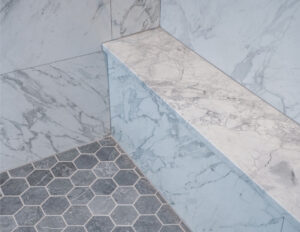How to Drywall a Basement: A Step-by-Step Guide for the Brave (and Slightly Crazy)
So, you’ve decided to turn your damp, spider-friendly basement into a cozy living space? Nice. Drywalling a basement might seem daunting, but with the right tools, a little patience, and maybe a few cups of coffee (or something stronger), we can tackle this together. At Verified Builders, Denver’s go-to crew for custom remodels and basement renovations, we’ve seen it all—from DIY disasters to Pinterest-perfect transformations. Let’s break down how to drywall like a pro, and when to call in reinforcements (hint: we’re just a phone call away).
Contents
- 1 Why Drywall Your Basement? Because Concrete Walls Aren’t Exactly Cozy
- 2 Tools & Materials You’ll Need (No, Duct Tape Won’t Work)
- 3 Step 1: Frame It Right (or Your Walls Will Look Like a Drunk Picasso’s Art)
- 4 Step 2: Hang the Drywall Like You Mean It
- 5 Step 3: Mud, Tape, Sand, Repeat (Welcome to Purgatory)
- 6 Step 4: Prime & Paint (or Admire Your Handiwork)
- 7 Common Mistakes Even “Experts” Make
- 8 When to Call a Pro: AKA Verified Builders to the Rescue
- 9 FAQs: Burning Questions, Straight Answers
- 10 Wrap-Up: You’ve Got This (But We’ve Got Your Back)
Why Drywall Your Basement? Because Concrete Walls Aren’t Exactly Cozy
Let’s be real: basements often feel like forgotten storage dungeons. Drywalling transforms that cold, echoey space into something functional—a home theater, gym, or even a guest suite. Plus, it adds insulation, hides wiring, and boosts your home’s value. Win-win-win.
But before you grab your tools, ask yourself: “Do I have the time, energy, and sanity for this?” If you’re nodding, let’s roll. If not, Verified Builders’ basement remodel contractors are here to save the day.
Tools & Materials You’ll Need (No, Duct Tape Won’t Work)
Here’s the lowdown on what’s essential:
- Drywall sheets (½-inch thickness is standard for basements—trust us, you don’t want paper-thin walls).
- Moisture-resistant drywall (a must for basements unless you enjoy mold parties).
- Stud finder, screws, utility knife, T-square, drywall saw, and a mud pan.
- Joint compound, tape, and sandpaper for finishing.
- A friend (because lifting 4×8 sheets solo is how you earn a one-way ticket to Chiropractor Town).
Pro tip: Skip the cheap tools. A wobbly T-square will haunt your seams forever.
Step 1: Frame It Right (or Your Walls Will Look Like a Drunk Picasso’s Art)
First, check for moisture issues. No one wants soggy drywall. Fix leaks, seal cracks, and install insulation if needed.
Next, frame the walls with metal or wood studs. Keep studs 16 inches apart—this isn’t a suggestion, it’s drywall law. Use a level religiously. Crooked frames = wavy walls = regrets.
Step 2: Hang the Drywall Like You Mean It
Measure twice, cut once. Or measure once, cut twice, and cry. Your call. Use a utility knife to score the drywall, snap it cleanly, and cut openings for outlets or vents.
- Start with the ceiling (yes, it’s awkward). Lift sheets perpendicular to joists and screw them in every 12 inches.
- Walls come next. Hang sheets horizontally, stagger seams between rows, and leave a ½-inch gap at the floor to prevent moisture wicking.
FYI: If you’re sweating bullets here, our home remodeling team at Verified Builders handles this in their sleep.
Step 3: Mud, Tape, Sand, Repeat (Welcome to Purgatory)
Ah, the “fun” part. Apply joint compound to seams, embed drywall tape, and add two more coats of mud. Sand between layers until your arms feel like jelly. Pro tip: Use a sanding sponge for corners and wear a mask—drywall dust is the glitter of construction.
Step 4: Prime & Paint (or Admire Your Handiwork)
Once your walls are smooth(ish), prime them to seal the drywall. Then paint with a color that screams “I did this!” or “Call Verified Builders next time.”
Common Mistakes Even “Experts” Make
- Skipping moisture checks. Basements are damp. Use green board or cement board in high-risk areas.
- Over-tightening screws. Stop when the head is just below the surface.
- Rushing the mud. Thin layers dry faster and crack less. Patience, grasshopper.
When to Call a Pro: AKA Verified Builders to the Rescue
Look, we get it—DIY projects are satisfying. But if you’re Googling “basement contractors near me” at 2 a.m. because your seams look like tectonic plates, it’s time to phone a friend. At Verified Builders, we handle everything from luxury home renovations to bathroom remodeling, and yes, we’ve fixed more DIY drywall than we can count.
Drywall Types Comparison: Because Choices Matter
| Type | Best For | Moisture Resistance | Cost ($) |
|---|---|---|---|
| Standard Drywall | Walls, ceilings | Low | 10–12 |
| Green Board | Bathrooms, basements | Moderate | 12–15 |
| Cement Board | High-moisture areas | High | 15–20 |
FAQs: Burning Questions, Straight Answers
1. Can I drywall over concrete basement walls?
Nope. Always frame a wall first to create an air gap. Direct contact = mold city.
2. How long does drywall take to finish?
For a 500 sq ft basement: 2–3 days for hanging, 3–5 days for mudding/sanding. Or 1 day with our general contractor team. Wink.
3. Why hire a basement remodel contractor?
Time, quality, and sanity. Plus, Verified Builders’ reviews speak for themselves—5 stars across the board.
Wrap-Up: You’ve Got This (But We’ve Got Your Back)
Drywalling a basement isn’t rocket science, but it’s definitely an art. Whether you DIY or call Verified Builders for whole house remodeling, your basement deserves better than concrete gloom. Got questions? Need a quote? Hit us up. We’re Denver’s favorite remodeling company, and we’re pretty good at turning “meh” spaces into “whoa.”
Now go forth and drywall. Or just call us. (No judgment either way. 😉)


